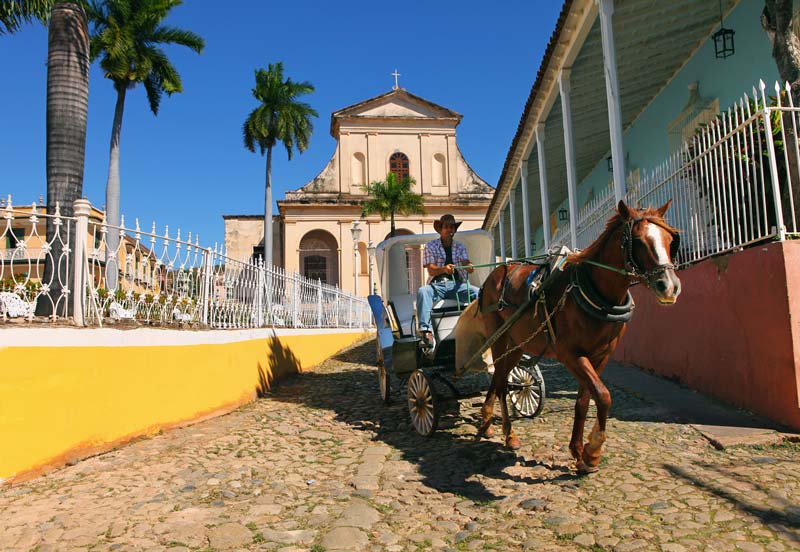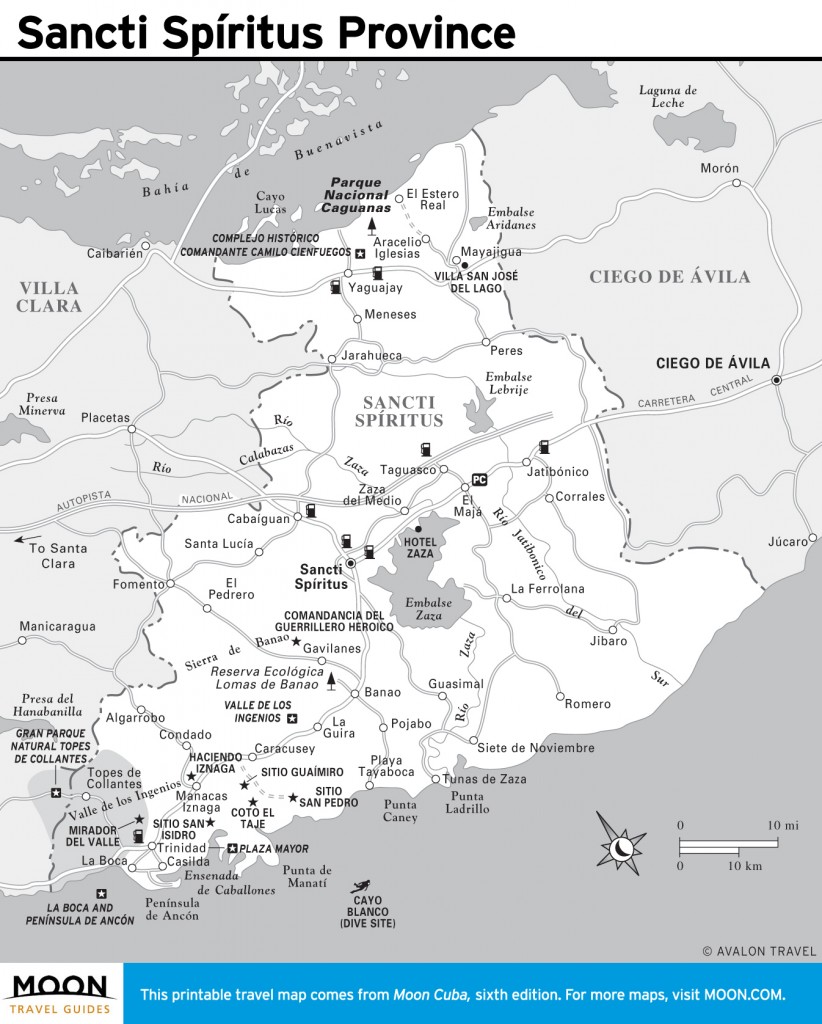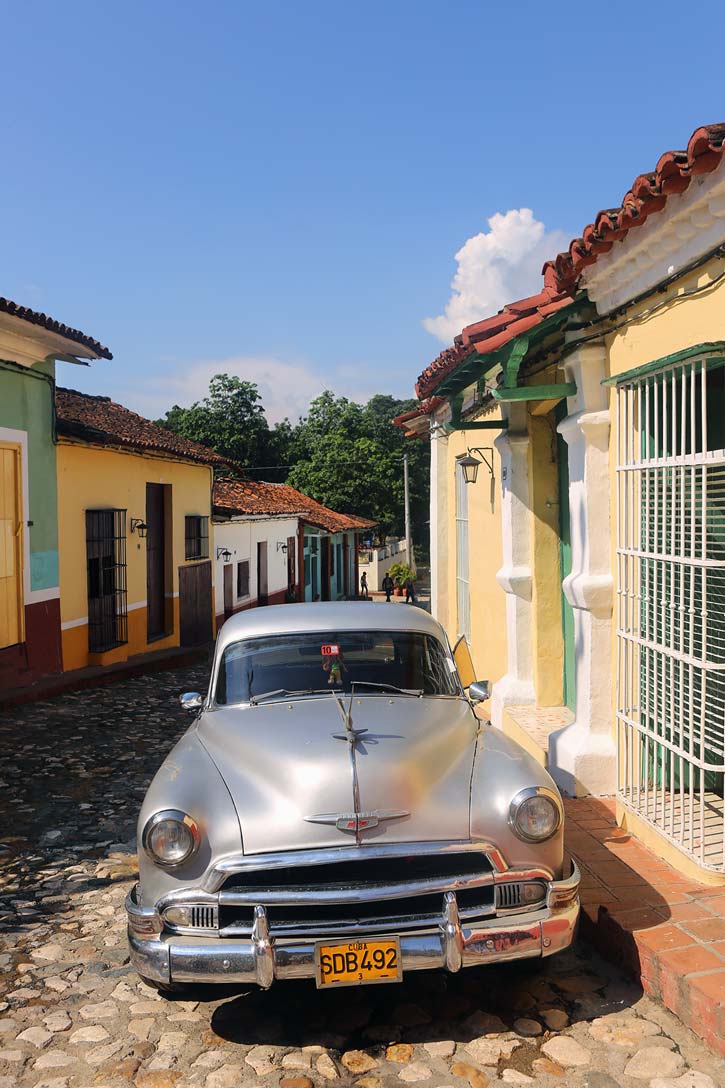
A horse-drawn buggy on Plaza Mayor, Trinidad. Photo © Christopher P. Baker.
The eponymous provincial capital struggles to compete but has its own colonial charms. This UNESCO World Heritage Site lies both in the lee of the Sierra Escambray and within a 10-minute drive of Playa Ancón—the most beautiful beach along Cuba’s south shore. Although the Sierra Escambray lies mainly within the provinces of Cienfuegos and Santa Clara, most of the trails and accessible sites of interest lie within Sancti Spíritus’s Gran Parque Natural Topes de Collantes, most easily accessed from Trinidad. Trinidad grew to colonial wealth from sugar, and the nearby and scenic Valle de los Ingenios (Valley of the Sugar Mills) recalls that era.The eponymous provincial capital struggles to compete but has its own colonial charms. To the north, rolling hills flow down towards the coastal plains, farmed in sugarcane and without beaches of noted appeal. The southern coastal plains are mostly inhospitably marshy, with few villages or roads, although bird-watchers are served by wetland reserves.

Sancti Spíritus Province
A week will barely suffice to enjoy this region, with the bulk of your time centered on Trinidad. The town itself needs two full days for exploring the colonial sites. However, the Trinidad experience is more about slowing down and immersing oneself in the local life, so a full week here should not be considered too much. Budget one day for an excursion to Gran Parque Natural Topes de Collantes to hike mountain trails and go birding. You’ll want beach time, too, so plan one day for sunning, snorkeling, and perhaps even scuba diving at Playa Ancón. If you prefer the company of Cubans, head to La Boca, where locals flock on weekends. A steam-train ride from Trinidad to the Valle de los Ingenios is also de rigueur.

A chevy parked on Calle Llanos in Sancti Spíritus. Photo © Christopher P. Baker.
The city of Sancti Spíritus deserves at least half a day’s exploration; you’ll be hard-pressed to find more than a full day’s worth of things to see and do. Bird-watchers might visit nearby Embalse Zaza, a vast wetland where the fishing for bass and tarpon is world-class.
The Autopista runs 15 kilometers north of the city and continues east for 20 kilometers before ending abruptly in the middle of nowhere, near the city of Jatibónico. The Circuito Norte cuts across the northern province inland of the coast, which has no beaches of appeal. Nature lovers, however, might get a thrill at Parque Nacional Caguanes, although there are no facilities and getting there is difficult. Interested in revolutionary history? The Complejo Histórico Comandante Camilo Cienfuegos, nearby at Yaguajay, is one of the better provincial museums.
Excerpted from the Sixth Edition of Moon Cuba.